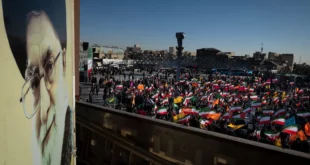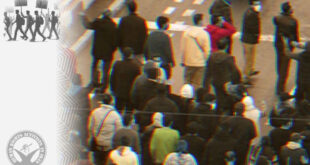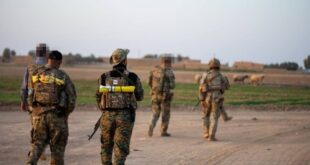
The Trump administration intensified its focus on Iran Sunday as the likely culprit behind attacks on important Saudi Arabian oil facilities over the weekend, with officials citing intelligence assessments to support the accusation and President Trump warning that he was prepared to take military action.
Administration officials, in a background briefing for reporters as well as in separate interviews on Sunday, also said a combination of drones and cruise missiles — “both and a lot of them,” as one senior United States official put it — might have been used. That would indicate a degree of scope, precision and sophistication beyond the ability of the Houthi rebels alone.
Mr. Trump, however, did not name Iran, saying he needed to consult with Saudi Arabia first.
“Saudi Arabia oil supply was attacked,” he said in a tweet on Sunday evening. “There is reason to believe that we know the culprit, are locked and loaded depending on verification, but are waiting to hear from the Kingdom as to who they believe was the cause of this attack, and under what terms we would proceed!”
Secretary of State Mike Pompeo said Saturday that Iran was behind what he called “an unprecedented attack on the world’s energy supply” and asserted that there was “no evidence the attacks came from Yemen.” He did not, however, say where they came from, and the Saudis refrained from directly blaming Iran.
Saudi Oil Facilities Attacked
By The New York Times
The administration’s determination that Iran played a direct role in the attack marked a significant escalation in months of back-and-forth tensions between the United States and Iran. It raised questions about how Washington might retaliate — and why Iran would have risked such a confrontation.
Mr. Trump’s warning echoed one he made in June after Iran shot down an American surveillance drone. He said then that the military had been “cocked and loaded” for a strike against Iran.
He said he called off the strike with 10 minutes to spare when a general told him that 150 people would probably die in the attack, which he said would have been disproportionate.
Administration officials said on Sunday they would seek to declassify more intelligence to buttress their case against Iran in the coming days. The satellite photographs released on Sunday did not appear as clear cut as officials suggested, with some appearing to show damage on the western side of the facilities, not from the direction of Iran or Iraq.
American officials said that more than 17 weapons were directed at the Saudi facilities, but not all reached their targets. Forensic analyses of the recovered weapons could answer questions about what they were, who manufactured them and who launched them.
Iran forcefully rejected Mr. Pompeo’s accusation on Sunday, with the foreign minister dismissing it as “max deceit.” The office of the Iraqi prime minister, Adel Abdul-Mahdi, also rejected any suggestion that Iranian operatives carried out the attack from Iraqi territory, saying Iraq would act firmly if its territory were used to attack other countries.
If Iran, or one of its proxies in Iraq or Yemen, carried out the attacks, it would fit into a strategy Iran has followed for months in its escalating confrontation with the Trump administration.
Squeezed by sweeping American sanctions on its oil sales, Iran has sought to inflict a similar pain on its adversaries — threatening the ability of Saudi Arabia and other American allies in the Persian Gulf to sell oil and holding out the possibility of driving up international oil prices in the months before President Trump seeks re-election.
“Iran wants to show that instead of a win-lose contest, Iran can turn this into a lose-lose dynamic for everyone,” said Ali Vaez, head of the Iran Project at the International Crisis Group.
Yet Iran has stopped short of carrying out the kind of direct, open attack on United States allies that might trigger a military response, preferring to let regional allies do the work or at least share the blame.
“Plausible deniability is a trademark of Iran’s pushback strategy,” Mr. Vaez said.
The combination of military pressure and deniability also fits with a strategy of increasing Iran’s bargaining power before possible talks at the United Nations this month.
President Emanuel Macron of France has said he hopes the meeting of the United Nations General Assembly, which opens Tuesday, will be an opportunity for de-escalation between the United States and Iran. The recent hostilities began when the Trump administration withdrew last year from an agreement to limit Iran’s nuclear program and then this year imposed sweeping sanctions to try to force Iran into a more restrictive covenant.
Several other world powers, including France, also signed the original agreement and still support it, and Mr. Macron has said he hopes to hold talks at the General Assembly about saving the agreement. Mr. Trump said this month that he was open to a possible meeting there with President Hassan Rouhani of Iran.
Even as Iranian diplomats denied any role in the attack, others close to Iran’s elite Islamic Revolutionary Guard Corps were reveling in the damage at the Saudi oil facilities, which process the vast majority of the country’s crude output.
The Trump administration, said Naser Imani, a former member of the guard’s political bureau, should take it as a warning to the United States and its Persian Gulf partners.
“If a few Houthis can cause this extensive damage, imagine what Iran could do if it was forced into a military conflict,” he said in a telephone interview on Sunday. “Iran has proved in the past few months that it has the will to pull the trigger as well as the military power to do so.”
A military strategist with the Revolutionary Guards, speaking on the condition of anonymity for fear of retaliation, also questioned whether the Houthis alone could have carried out such a complex and effective attack without Iranian help.
But whoever carried out the attack, the Iranian strategist said, the message to the West and its regional allies was the same. If the United States strikes Iran, “the flames of war in the Persian Gulf will burn you all,” he said.
A senior commander for the Revolutionary Guards insisted that the country was ready for “full-fledged” war, the semiofficial Tasnim news agency reported, according to Reuters.
“Everybody should know that all American bases and their aircraft carriers in a distance of up to 2,000 kilometers around Iran are within the range of our missiles,” said Gen. Amir Ali Hajizadeh, the head of the Revolutionary Guards’ air force.
How the Trump administration responds remains to be seen. Breaking with a pattern under both Democratic and Republican presidents, the Trump administration has said that it intends to hold Iran fully responsible for any attacks carried out by the Houthis or other regional allies that the administration deems Iranian proxies.
Previous administrations have said that Iran was arming and training allied groups such as the Lebanese militia Hezbollah and Shiite militias in Syria or Iraq to extend its regional influence. Yet in the past, the United States has generally declined to retaliate against Iran militarily even when those groups have attacked the American military, as Iranian-backed Shiite militias did during American occupation of Iraq.
 Eurasia Press & News
Eurasia Press & News



